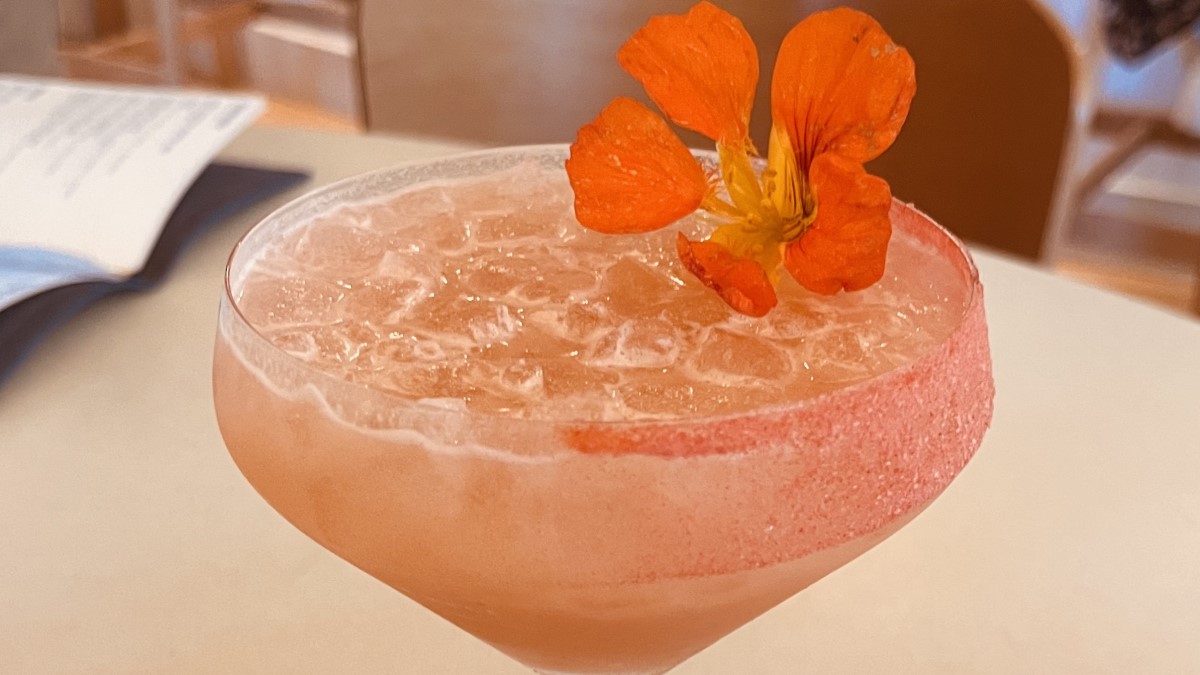Despite sitting atop the Boring Volcanic Lava Field (named after nearby Boring, Oregon), Portland is anything but dull. Its strategic location offers easy access to the Pacific, mountains and skiing, and the renowned Willamette Valley wine country. These are key reasons my buddy Joel and his wife – both geologists – moved here 20 plus years ago and live on a dormant volcano (Mt. Tabor). This geographical bounty has also made Portland a haven for food and drink enthusiasts. We chose Portland to represent the Pacific Northwest on our Liquid Insights Tour, with Debbi Peek, our National Accounts Mixologist. The city's vibrant foodie culture is also fueled by its proximity to farm-fresh ingredients, grazing pastures, hop fields, and the sea. This abundance of resources undoubtedly inspires chefs, mixologists, sommeliers, and wine enthusiasts alike, resulting in a diverse culinary scene that reflects the city's communities, growing in both size and diversity.
Like other markets we’ve visited so far, Portland tended to be pretty laid back in its style and presentation of drinks with broad use of Amari, vermouths and sherry in cocktails and unique wines featured (“approachable elevation”). Fat washing, like other markets, was widely used adding umami flavors from olive oil, fois gras and silkiness from coconut cream (in some cases used to clarify drinks). While we’ve previously seen a lot of olive oil used to wash spirits, we saw two different places infuse olive oil with tangerine to be used in the drink and as a drizzle on a house-made gelato scooped-spoon tasting garnish for an Aperol Spritz twist. Through its simplicity and flavor – this drink was one of the standouts from the trip.
Blended scotch was again popular in cocktails here with one of the highlights called #59 (no complicated meaning behind the name – just the 59th drink developed for the place). This cocktail used blended scotch with lemon and salted maple syrup and bitters. This venue also had a cool dessert feature… their decadent panna cotta highly recommended to be enjoyed with a sipping shot of their house amaro blend, stored and poured from a vintage dispenser the owner, who is into antiques, found for the place.
Another spirit type that we’ve been seeing more than in years past throughout the Tour and again in Portland, was aquavit, the national spirit of Scandinavia. Like gin, it’s a grain spirit infused with botanicals. However, rather than the dominant flavor of juniper in gin, aquavit has more flavor coming from carraway, as well as coriander. This imparts more of a savory flavor to deliver more umami flavors – a strong new trend we’ve been seeing accelerate across this year’s Tour stops. The best example we found in Portland was the “Happy Accident,” a super-simple and incredibly delicious combination of aquavit, orange liqueur, Lillet Blanc and Torella, an Italian digestif with hints of anise, fennel, and chamomile to accentuate the flavors of the aquavit. Another unique spirit – Clairin, Haiti’s traditional rum – was featured at this James Beard award-winning chef’s Haitian-inspired restaurant. This is a clear spirit made from wild sugar cane, so it expressed grassy and vegetal notes like rhum Agricole. It was the perfect complement in the “Doctor B” as a finished spritz for aroma and light flavor to rum, mezcal (uncommon combination!), gentian liqueur and americano aperitif. The Clairin amplified the herbal notes of this drink and its ultra-bright golden-yellow color.
One of the coolest platforms to deliver low alcohol options was at a wine-focused account (that also had killer cocktails) and their “Low Proof/High Pleasure” cocktail section featuring three vermouth and soda combinations, served in a highball glass with an orange twist for $10. We ordered with Atxa vermouth bianco from the Basque country of Spain, which had notes of bitter orange, elderflower, and vanilla. The rosé version was also delightful with Rosato D’istine from Tuscany that added a touch of color to the drink, as well as complex and nuanced blend of infusions from 34 botanicals including wormwood, elderberry, sage, quinquina, gentian, mint, and juniper.
On the non-alcoholic front, we saw a wide range of options, usually three or more per menu. One of the best was “Baby I’m a Star” (IYKYK) using DHŌS non-alcohol orange liqueur, passionfruit, vanilla, cane sugar and topped with Odd Bird Blanc de Blanc non-alcoholic bubbly from Languedoc France served up in a coupe and garnished with and edible Nasturtium flower for $20 – yes, $20. Another stunning example was at a Thai barbecue bar that had an “Approved by Chef” non-alcoholic highball made with in-house cucumber yuzu shrub and ginger lime soda, also served with a fresh orchid – this one, however, was only $7.
For obvious reasons, wine lists were heavily focused on wines from Oregon, but also wines from a similar latitude in France, as well a wider range of whites from other markets like Gruner Veltliner and Pinot Blanc from Austria, an aromatic Traminer from Uruguay, Vermentino from Italy, and dry Rieslings and even chilled effervescent red wine from the Dornfelder grape in Germany. Our group discussed how the exploration of lighter, dry, and unique whites may be a response to consumers love for Sauvignon Blanc and at times, looking for other variations on that type of profile, but with different flavor accents.
The wine-centric concept we visited also had a ton of fun with their menu in a way that I think could be applied to any wine list striving to appeal to younger consumers. One light-bodied chilled red from Columbia Gorge, WA was described as an “Aromatically Explosive Light Bodied Red that is made from all the grapes of Chateauneuf du Pape but made in a light elegant style. Tastes like you dropped a blood orange and a serrano chili in a watermelon agua fresca and dusted the glass with African spices. This is insanely beautiful.”
Debbi Peek said of this Tour stop, “This great city, known in the bar community throughout the U.S. for Portland Cocktail Week, did not disappoint, showcasing remarkable creativity, diverse flavors, and ethnic perspectives.”
It's a place delivering not only a cool and unique vibe, but also exceptional innovation in an unpretentious package, leaving us eager to return soon for another expedition.
Brian Masilionis
Sr. Dir. of On-Premise National Accounts
Date Published
September 04, 2024



